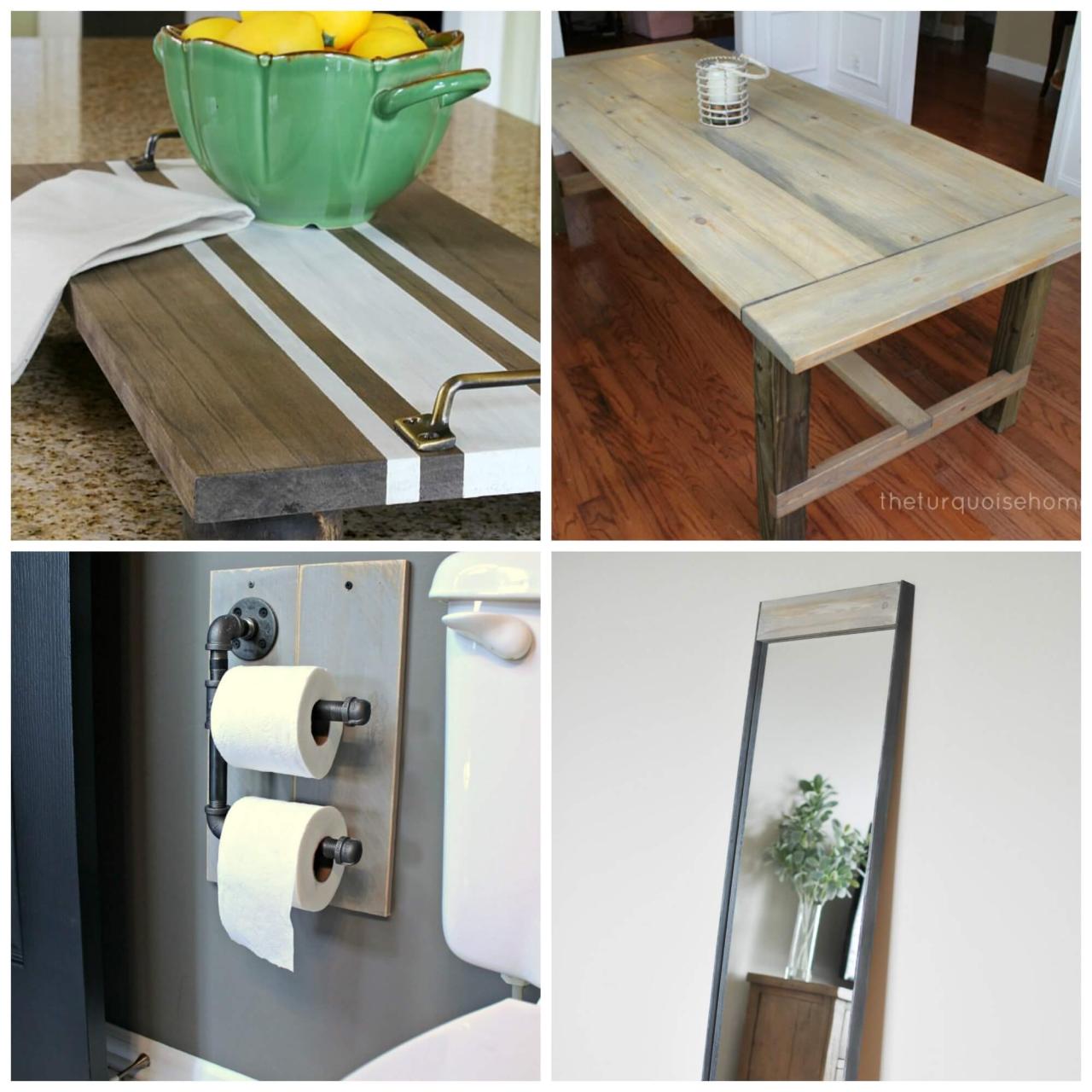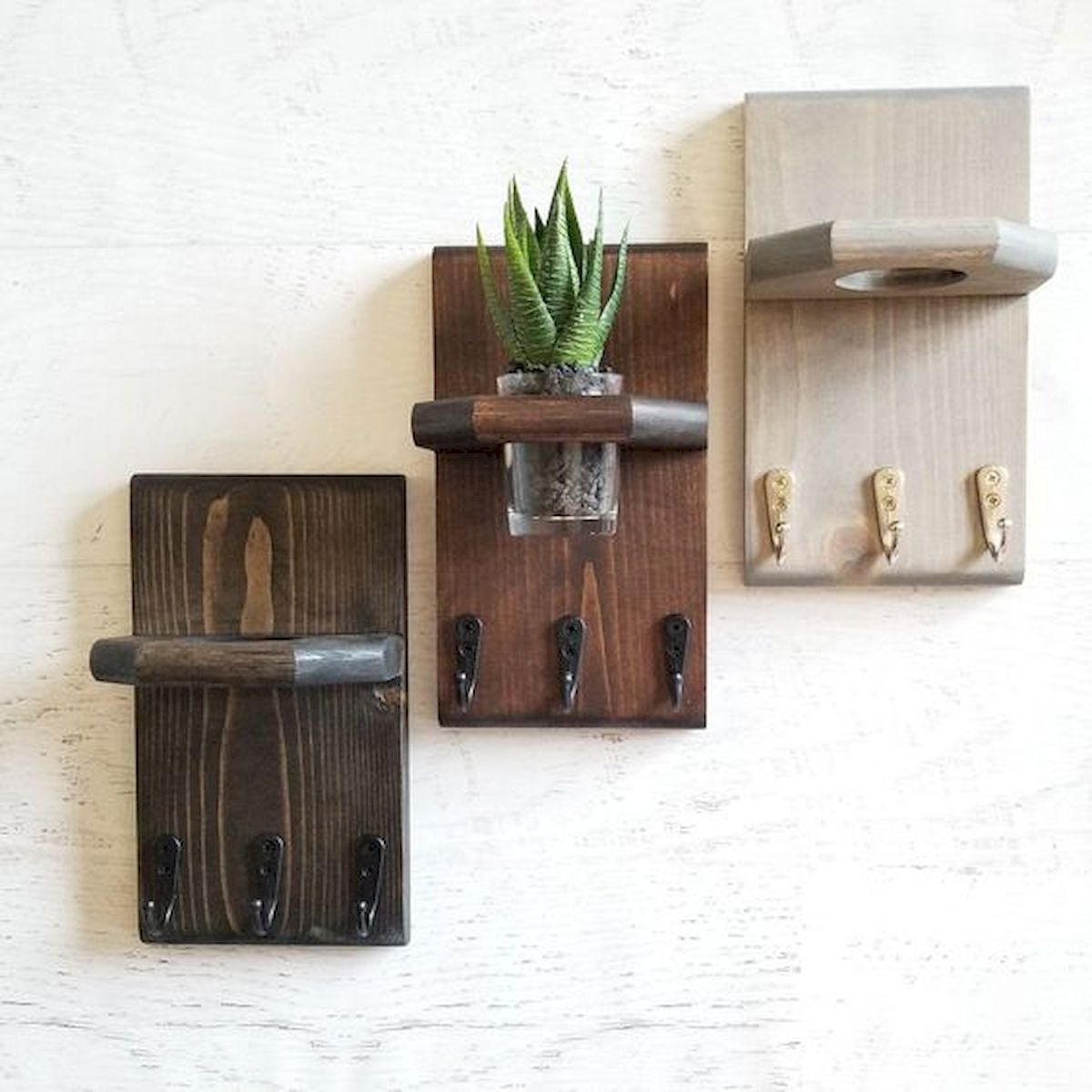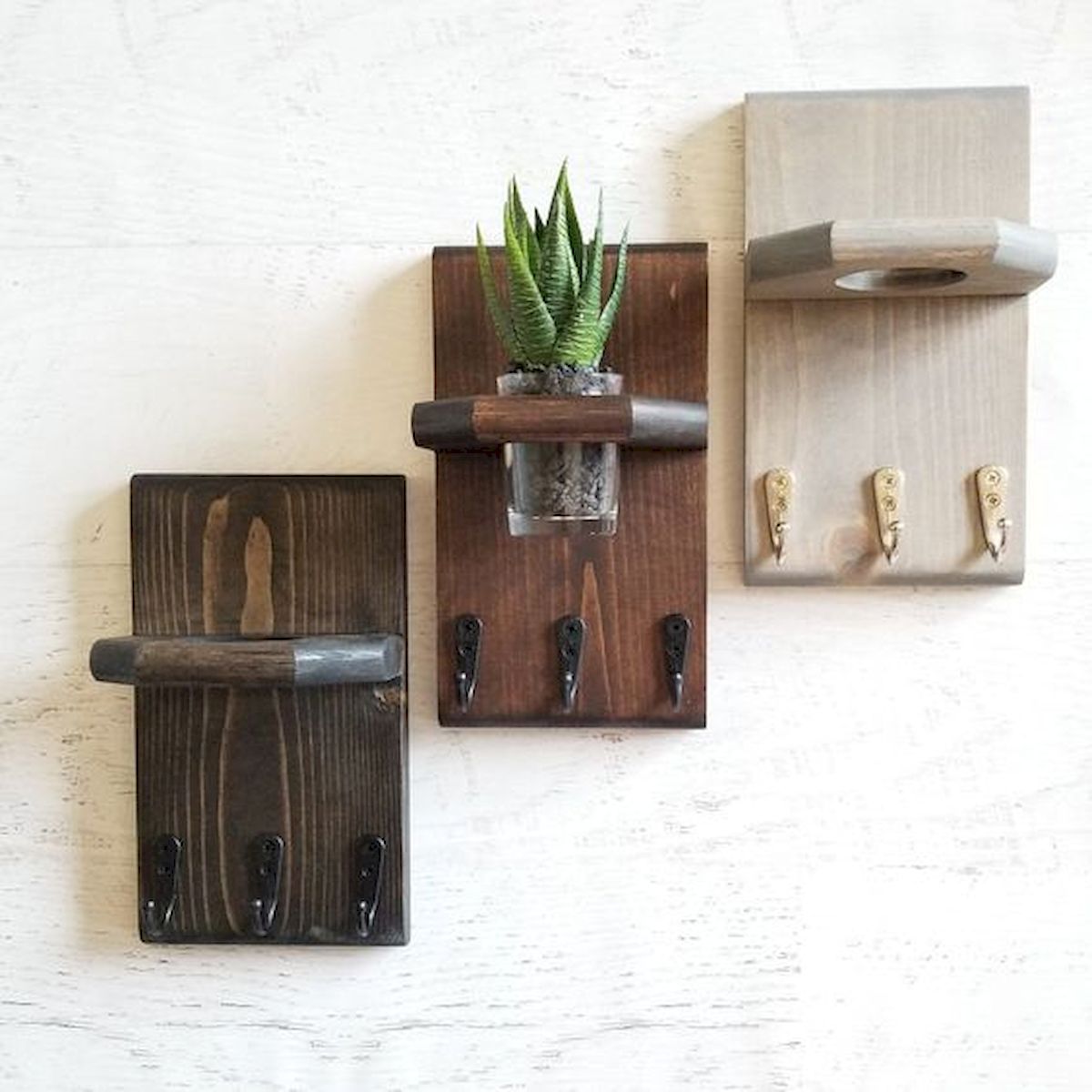DIY projects offer a fantastic opportunity to transform your surroundings, express your creativity, and learn new skills. From simple crafts to ambitious home renovations, the possibilities are endless. Whether you’re a seasoned DIY enthusiast or a curious beginner, the world of DIY has something to offer everyone.
The journey into DIY begins with inspiration, fueled by a desire to create, improve, or personalize something unique. It’s a journey of discovery, where you explore different materials, techniques, and tools, ultimately leading to a sense of accomplishment and pride in your creations.
Essential DIY Tools & Materials: Diy Projects

Embarking on your DIY journey requires a basic set of tools and materials to get started. This section will guide you through the essential tools, emphasizing safety precautions, and common DIY materials, along with their properties and uses.
Essential DIY Tools
A well-equipped toolbox is a DIYer’s best friend. Here’s a list of essential tools categorized by function:
- Measuring: A tape measure, ruler, and level are crucial for ensuring accuracy in your projects.
- Cutting: A utility knife, saw, and shears are essential for cutting various materials like wood, plastic, and fabric.
- Fastening: A hammer, screwdriver, and drill are used for securing materials together.
- Other: Pliers, wrenches, and a clamp are versatile tools for holding, gripping, and tightening objects.
Safety Precautions
Safety should always be a top priority when using DIY tools. Here are some essential precautions:
- Wear safety glasses: Protecting your eyes from flying debris is crucial.
- Use proper gloves: Protect your hands from cuts and splinters.
- Use tools correctly: Read the instructions and use the tools for their intended purpose.
- Keep tools sharp: Dull tools can be more dangerous than sharp ones.
- Be aware of your surroundings: Ensure a clear workspace and avoid distractions.
Common DIY Materials
A wide range of materials are used in DIY projects, each with unique properties and uses:
- Wood: Popular for its versatility, strength, and natural beauty. Different types of wood have varying properties, such as hardness, grain pattern, and durability.
- Plastic: Lightweight, durable, and water-resistant, making it suitable for various projects, from furniture to storage containers.
- Metal: Strong, durable, and versatile, commonly used for structures, hardware, and decorative elements.
- Fabric: Used for upholstery, curtains, and decorative accents, offering a wide range of textures, colors, and patterns.
- Paint: Used for both protection and aesthetic purposes, offering a wide range of colors and finishes.
Types of Wood, Diy projects
Choosing the right type of wood is crucial for your project’s success. Here’s a table comparing the pros and cons of some common wood types:
| Wood Type | Pros | Cons |
|---|---|---|
| Pine | Softwood, easy to work with, affordable | Soft, prone to scratches and dents |
| Oak | Hardwood, strong, durable, beautiful grain | Expensive, heavy, can be difficult to work with |
| Maple | Hardwood, strong, durable, beautiful grain | Expensive, can be difficult to work with |
| Cherry | Hardwood, beautiful grain, durable | Expensive, can be difficult to work with |
DIY Project Examples & Tutorials
This section delves into practical DIY projects, offering step-by-step instructions and helpful tips. Explore these examples to ignite your creative spirit and embark on your own DIY adventures.
Building a Simple Bookshelf
A bookshelf is a versatile addition to any room, providing storage and a touch of organization. Here’s a straightforward guide to constructing a basic bookshelf:
Materials
- Wood boards (pine or plywood)
- Screws
- Wood glue
- Measuring tape
- Saw (hand saw or circular saw)
- Drill
- Level
- Sandpaper
- Wood stain or paint (optional)
Instructions
- Cut the wood: Measure and cut the wood boards to the desired dimensions for the shelves, sides, and back. Refer to a simple bookshelf design or create your own based on your space.
- Assemble the sides: Attach the side pieces to the bottom shelf using wood glue and screws. Ensure the sides are perpendicular to the bottom shelf. Use a level to check for evenness.
- Add the shelves: Attach the remaining shelves to the sides using wood glue and screws. Ensure the shelves are parallel to the bottom shelf.
- Attach the back: Cut the back piece to fit the dimensions of the bookshelf. Attach it to the sides and shelves using wood glue and screws.
- Sand and finish: Sand the entire bookshelf to smooth out any rough edges. Apply wood stain or paint if desired.
- Enjoy your new bookshelf: Once the finish is dry, place your books and decorative items on your newly built bookshelf.
Upcycling an Old Piece of Furniture
Upcycling transforms discarded furniture into unique and functional pieces. This tutorial focuses on repurposing an old dresser into a stylish storage unit.
Materials
- Old dresser
- Sandpaper (various grits)
- Primer
- Paint (choose a color that complements your décor)
- Paintbrushes
- Hardware (new knobs or handles)
- Optional: Stencils or decorative elements
Instructions
- Prepare the dresser: Remove all drawers and hardware. Thoroughly clean the dresser with soap and water. Sand the surface using sandpaper of various grits to create a smooth finish and remove any imperfections.
- Prime the dresser: Apply a coat of primer to the dresser, allowing it to dry completely. Primer helps the paint adhere better and creates a more even finish.
- Paint the dresser: Choose a paint color that complements your home decor. Apply multiple coats of paint, allowing each coat to dry completely before applying the next.
- Add decorative elements: Use stencils, paint, or other decorative elements to personalize the dresser. Let your creativity shine!
- Replace the hardware: Install new knobs or handles to give the dresser a fresh look.
- Enjoy your upcycled dresser: Place the drawers back in the dresser and arrange your belongings inside. Your upcycled dresser is ready to serve as a stylish storage solution.
DIY Project Examples
Here are a few DIY projects with varying levels of difficulty, along with the materials needed and links to helpful tutorials:
| Project Name | Difficulty Level | Required Materials | Tutorial Link |
|---|---|---|---|
| Simple Birdhouse | Beginner | Wood boards, screws, nails, paint, drill | [Link to a relevant tutorial] |
| Rustic Wooden Sign | Beginner | Wood plank, stain, paint, stencils, saw, drill | [Link to a relevant tutorial] |
| DIY Pallet Coffee Table | Intermediate | Pallets, wood screws, sandpaper, stain or paint | [Link to a relevant tutorial] |
| Upcycled Tin Can Planters | Beginner | Tin cans, paint, potting soil, plants | [Link to a relevant tutorial] |
Benefits of Online Resources for DIY Projects
Online resources provide a wealth of inspiration and guidance for DIY projects.
- Inspiration and Ideas: Websites, blogs, and social media platforms showcase countless DIY projects, providing inspiration for your next creative endeavor.
- Step-by-Step Tutorials: Detailed instructions, photographs, and videos guide you through each step of the project, ensuring success even for beginners.
- Community Support: Online forums and groups connect you with fellow DIY enthusiasts, offering support, advice, and troubleshooting tips.
- Material Sourcing: Online retailers offer a wide range of DIY materials, making it easy to find everything you need for your project.
DIY Projects for Outdoor Living

Transform your outdoor space into a haven of relaxation and enjoyment with these inspiring DIY projects. Whether you’re seeking a cozy retreat, a vibrant garden, or a functional outdoor kitchen, these projects offer creative solutions for enhancing your outdoor living experience.
DIY Outdoor Projects Table
This table provides a comprehensive overview of popular DIY outdoor projects, outlining the materials needed, essential tools, and the benefits they offer.
| Project Name | Materials | Tools | Benefits |
|---|---|---|---|
| Outdoor Fire Pit | Stone, Concrete Blocks, Fire Pit Ring, Gravel | Shovel, Level, Trowel, Measuring Tape | Creates a cozy gathering space for evenings, provides warmth, and enhances ambiance. |
| Pergola | Wood Beams, Posts, Lattice Panels, Hardware | Saw, Drill, Level, Measuring Tape, Hammer | Offers shade, defines an outdoor space, and provides a beautiful architectural element. |
| Outdoor Kitchen | Countertop, Cabinets, Sink, Grill, Appliances | Saw, Drill, Level, Measuring Tape, Hammer | Creates a functional and convenient outdoor cooking and dining area. |
| Outdoor Seating | Wood, Metal, Fabric, Cushions | Saw, Drill, Screwdriver, Staple Gun | Provides comfortable seating for outdoor gatherings, relaxation, and dining. |
Building a Simple Garden Planter
Creating a garden planter is a straightforward project that allows you to showcase your favorite plants and flowers.
- Choose a Container: Select a container made from wood, metal, or plastic. Ensure it has drainage holes to prevent waterlogging.
- Prepare the Container: Clean the container thoroughly and paint or stain it, if desired, to enhance its appearance.
- Add Drainage Material: Place a layer of gravel or broken pottery shards at the bottom of the container to promote drainage.
- Fill with Potting Mix: Fill the container with high-quality potting mix, leaving a few inches of space at the top.
- Plant Your Flowers or Vegetables: Carefully plant your chosen flowers or vegetables, spacing them according to their specific needs.
- Water Thoroughly: Water the plants thoroughly to settle the soil and help them establish roots.
Building a Simple Bird Feeder
Attract feathered friends to your backyard with a DIY bird feeder.
- Choose a Design: Select a simple bird feeder design, such as a platform feeder or a hanging feeder.
- Gather Materials: Gather the necessary materials, including wood, metal, or plastic, along with screws, nails, and wire.
- Cut and Assemble: Cut the materials to the desired dimensions and assemble them using screws or nails.
- Add a Perching Platform: Create a platform for the birds to perch while feeding.
- Attach a Feeder Base: Securely attach a base to the feeder to provide stability.
- Hang or Place the Feeder: Hang the feeder in a visible and accessible location, or place it on a stand.
- Fill with Birdseed: Fill the feeder with a variety of birdseed to attract different bird species.
Benefits of Using Recycled Materials for Outdoor DIY Projects
Recycling materials for outdoor DIY projects offers numerous advantages, promoting sustainability and reducing waste.
- Environmental Friendliness: Reusing materials reduces the demand for new resources and minimizes landfill waste.
- Cost Savings: Recycled materials are often available for free or at a significantly lower cost than new materials.
- Unique and Creative Designs: Recycled materials can be repurposed into unique and creative outdoor projects, adding character and charm to your space.
- Sustainability: Recycling and repurposing materials contribute to a more sustainable lifestyle, reducing our environmental footprint.
Choosing the Right Plants and Flowers for an Outdoor Space
Selecting plants and flowers that thrive in your specific outdoor space is crucial for their growth and longevity.
- Consider Your Climate: Choose plants and flowers that are well-suited to your climate, including temperature, humidity, and rainfall.
- Assess Sunlight Levels: Determine the amount of sunlight your outdoor space receives throughout the day. Select plants that thrive in full sun, partial shade, or shade.
- Evaluate Soil Conditions: Analyze your soil type and pH level. Choose plants that are compatible with your soil conditions.
- Think About Space: Consider the size of your outdoor space and select plants that will grow appropriately without overcrowding.
- Choose a Variety of Plants: Incorporate a mix of plants with different textures, colors, and bloom times to create visual interest throughout the season.
DIY Projects on a Budget
Creating stunning DIY projects doesn’t have to break the bank. With a little creativity and resourcefulness, you can transform your home and garden without spending a fortune.
Budget-Friendly DIY Projects
Here are five DIY projects that you can complete on a limited budget, using inexpensive materials and resourceful techniques:
- Repurposed Pallet Wall Art: Give old pallets a new life by transforming them into unique wall art. You can paint them, stain them, or even use them as a base for a chalkboard. Pallet wood is readily available and often free for the taking, making this project a budget-friendly choice.
- DIY Mason Jar Lanterns: Mason jars are a versatile crafting material, and you can easily transform them into charming lanterns. Simply decorate the jars with paint, fabric, or twine, and add a tea light or battery-operated candle for a warm glow.
- Upcycled Clothing Storage: Give your old t-shirts a new purpose by turning them into storage bins. Simply cut off the sleeves and bottom of the shirt, then sew the edges together to create a pouch. You can use these pouches to store small items like toys, craft supplies, or even toiletries.
- DIY Planter Boxes from Recycled Materials: Create unique planter boxes using recycled materials like old crates, barrels, or even metal cans. These repurposed containers add a touch of rustic charm to your garden and can be easily customized with paint or stain.
- Painted Terracotta Pots: Transform plain terracotta pots into vibrant statement pieces with a few coats of paint. You can use acrylic paint, spray paint, or even chalkboard paint to create a personalized look.
Shopping Smart for DIY Materials
Finding the best deals on DIY materials can significantly reduce your project costs.
- Shop Around: Compare prices at different stores, both online and in person, to find the best deals. Look for sales and clearance items, and don’t be afraid to haggle for a better price.
- Utilize Secondhand Stores: Thrift stores, antique shops, and flea markets can be treasure troves for unique and affordable DIY materials. You can often find vintage furniture, fabric scraps, and other items that can be repurposed for your projects.
- Check Online Marketplaces: Websites like Craigslist, Facebook Marketplace, and eBay offer a wide range of DIY materials at discounted prices. You can often find people selling gently used tools, furniture, and other items that are perfect for DIY projects.
Repurposing and Upcycling for DIY
Repurposing and upcycling existing items is a great way to save money and reduce waste.
- Transform Old Furniture: Give old furniture a new lease on life with a fresh coat of paint, new hardware, or even a fabric makeover.
- Repurpose Glass Jars: Use glass jars to create storage containers, candle holders, or even decorative vases.
- Upcycle Old Clothing: Turn old shirts, pants, and blankets into new items like tote bags, pillowcases, or even rugs.
Free and Low-Cost DIY Resources
There are many free and low-cost DIY project resources available online and in your local community.
- Online Tutorials: Websites like YouTube, Pinterest, and Instructables offer a wealth of free DIY tutorials, covering a wide range of projects and skill levels.
- Local Libraries and Community Centers: Many libraries and community centers offer free workshops and classes on DIY topics, including woodworking, sewing, and gardening.
- Free DIY Supplies: Look for free or discounted DIY supplies at local businesses, such as hardware stores, lumberyards, and home improvement centers. Many businesses offer scrap wood, paint samples, and other materials for free or at a reduced price.
Last Word
The DIY world is a vibrant and ever-evolving landscape, offering endless possibilities for exploration and self-expression. With careful planning, dedication, and a touch of creativity, you can embark on a rewarding journey of DIY projects, transforming your home, your life, and your skills.
